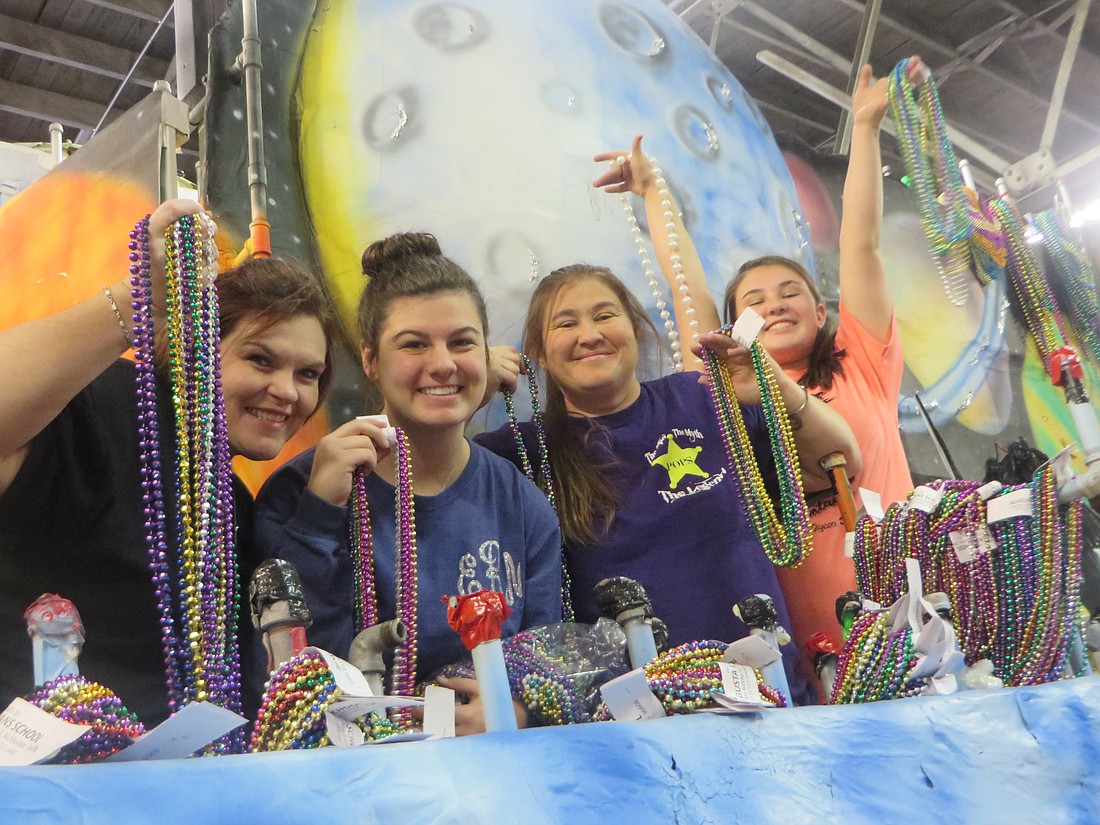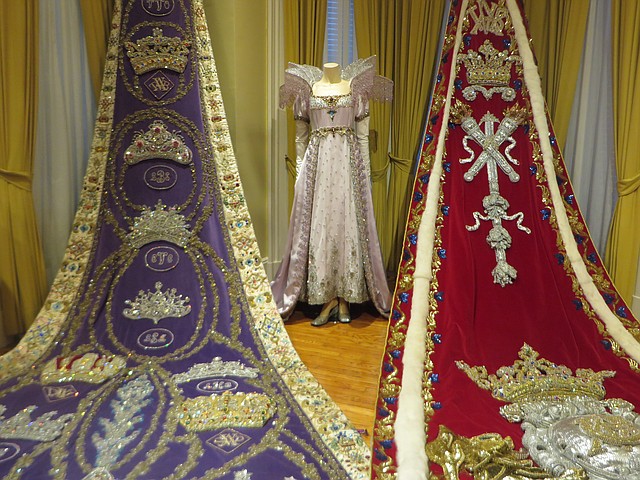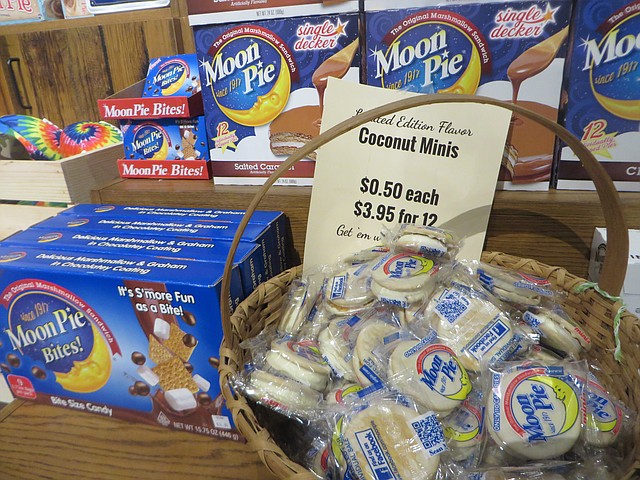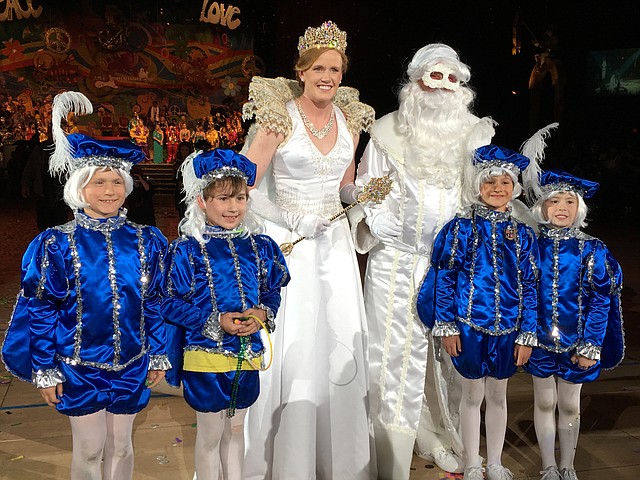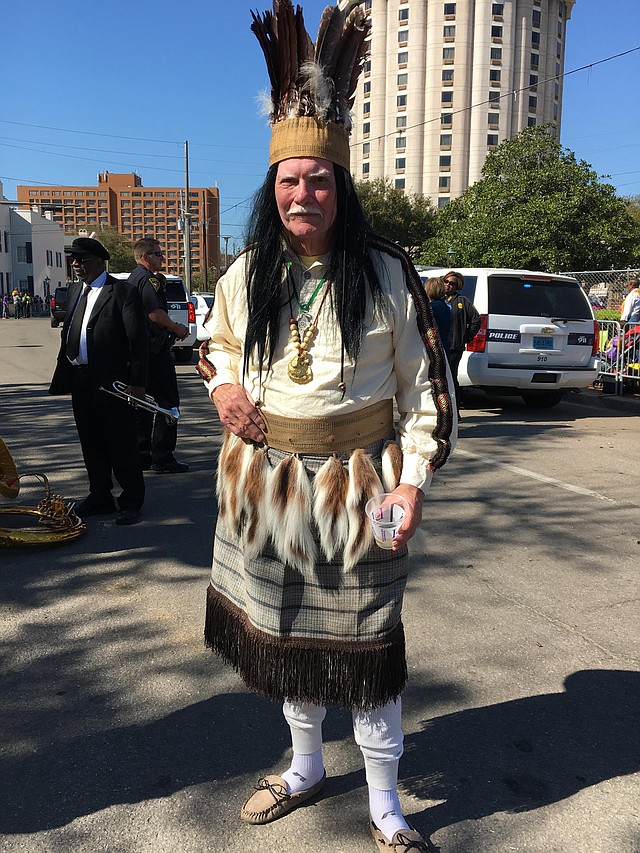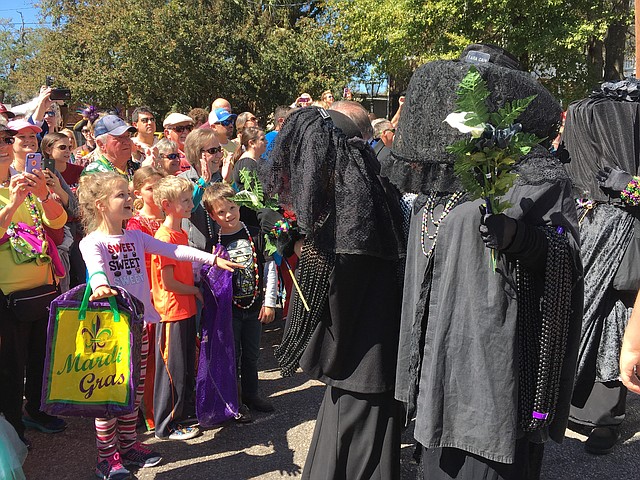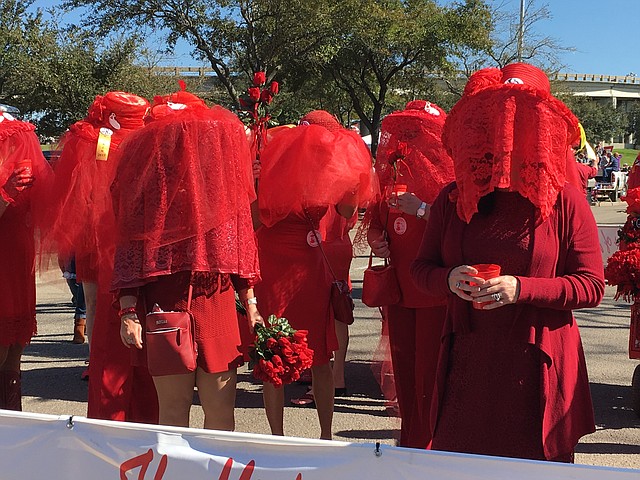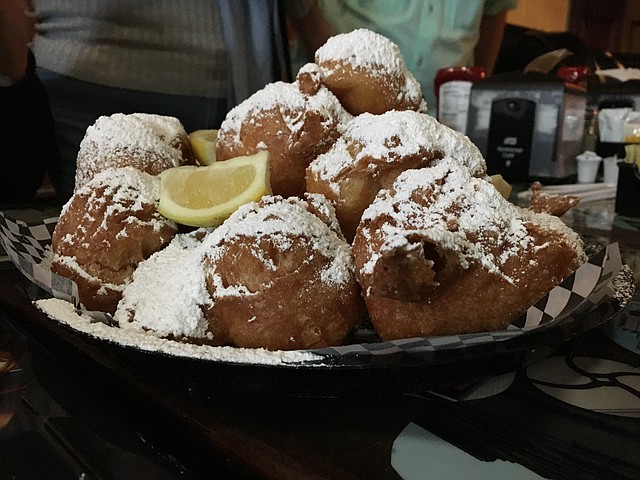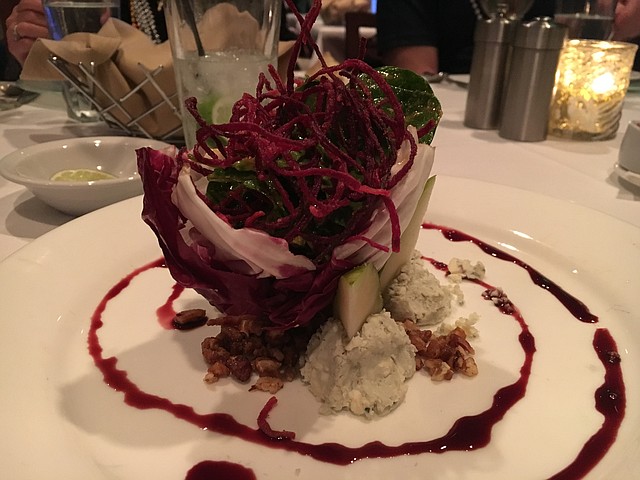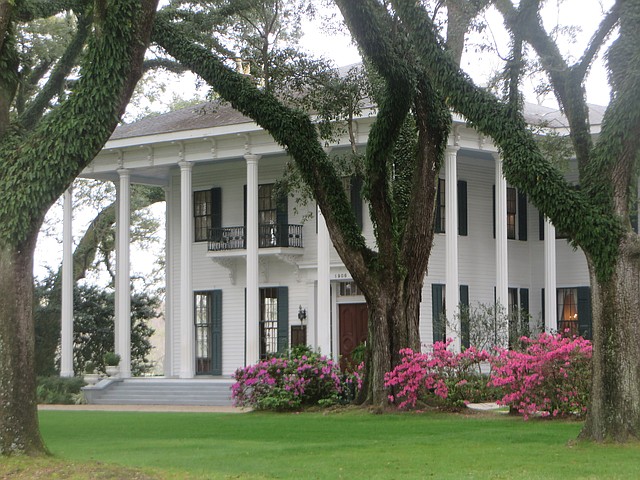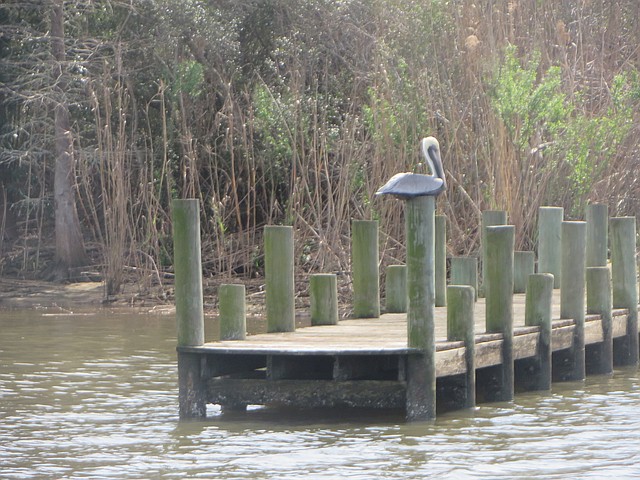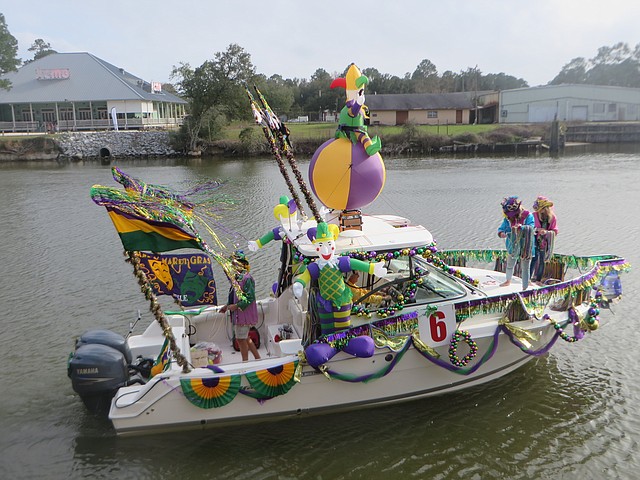Beads, glorious beads! Mardi Gras in Mobile, the city that was 'born to celebrate'
March 27, 2017 at 6:00 a.m.
One minute I was a very sane, controlled woman watching a parade. Then, before I knew it, I had joined the masses of men, women and children jumping up and down screaming for beads. Yes, beads! And oh, did I want them. As they were tossed and thrown in spectacular fashion by the revelers on the floats, I eagerly grabbed these colorful strands. And when they dropped to the ground, I scrambled to scoop them up. I confess I became a bit competitive in my desire to acquire as many beads as possible. By the end of the parade, my neck was weighted down with necklaces of all hues and sizes. I wore them like a badge of honor.
I had come to Mobile, Alabama to celebrate Mardi Gras. It may be a surprise for many folks to learn that it’s the city of Mobile, not New Orleans that has bragging rights when it comes to being the oldest annual Carnival festival in the U.S. And mind you, Mobilians take ownership of Mardi Gras very seriously. They consider it one of the three major seasons; the other two being football and hurricane.
We have Frenchman Nicholas Langlois to thank for bringing Mardi Gras to our country. The festival began as a French Catholic tradition back in 1703, when Mobile was the first capital of French Louisiana, fifteen years before New Orleans was founded. In Mobile, the holiday has now evolved into a multi-month season of celebrations that start in November and continue through the latter part of February. The final week of Mardi Gras is the biggest with the most elaborate and largest parades taking place the days leading up to the finale on Fat Tuesday. There are a total of thirty-seven parades and seventy-seven balls, one for each krewe or mystic society, that occur during the season.
Krewes are often made up of affiliated groups, and there’s a krewe for everyone, whether you’re male, female, married, single, black, white, gay, etc. There are also open membership krewes that even welcome visitors. The societies typically operate under a business structure where members pay participation dues. Many of the newer societies actively recruit prospective members; whereas, some of the older orders have restricted membership with waiting lists. The oldest parading society in the city is the Order of Myths, founded in 1867, and known for its emblem consisting of “Folly” chasing “Death” around the broken pillar of life, a famous symbol of Mardi Gras in Mobile. Other notable mystic societies include the Knights of Revelry, Mystics of Time, Crewe of Columbus, Mystic Stripers Society and Infant Mystics. The Order of Polka Dots is the oldest and largest of the Mobile ladies’ societies.
If the complex nature of the Carnival scene is a bit befuddling, stop in at the Mobile Carnival Museum for some clarity. You’ll be able to immerse yourself in the rich history and traditions of Mardi Gras and see firsthand the intricate designs and artistry of all the majestic crowns, scepters and robes of the royalty over the years. There are also videos of past parades and balls, along with historical photographs dating back to 1886. You can even experience a behind-the-mask view of the street party by climbing aboard a rocking float.
In Mobile, perhaps unlike New Orleans, Mardi Gras is all about family. Locals view Carnival as a time of family traditions and you’ll see many parents with their young children gathered along the parade routes in downtown. People line the streets hours in advance to stake out their spots. You’ll know when the festivities are about to begin because the noise level in the crowd ratchets way up in volume, as the police take their positions. Then you’ll hear the music getting louder and it’s lights, cameras, action! Floats follow one after another, interspersed by high school marching bands and dance teams. Each float is preceded by a sign with its name. The floats are typically multilevel, and sturdily built to withstand a good rocking by its riders. Some of Mobile’s most famous floats are the Mystics of Time’s Vernadean, a giant, rolling, fire and smoke-breathing dragon; the Crewe of Columbus’ three ships - the Nina, Pinta and Santa Maria; and Mystic Stripers Society’s ferocious Tiger and sleek Zebra.
Floats are well-equipped with “throws,” or small gifts, that riders toss to the eager masses. Plastic beads are the most popular, followed by Moonpies, individually wrapped snacks consisting of two round graham cracker cookies with marshmallow filling in the center, dipped in a flavored coating. The confection is often associated with the American South, where they are traditionally accompanied by an RC Cola. During Mardi Gras, 3.1 million Moonpies and 51 million strands of beads are used as throws. Other items include doubloon coins, decorated plastic cups, stuffed animals, Frisbees, foam footballs, whistles and assorted small toys. Most treasured and sought after among revelers are the limited edition doubloon coins and the larger, more elaborate bead necklaces with figures of animals, people or other objects.
About 1.7 million people of all ages watch the parades each year, which includes nearly 800,000 visitors who flock to the city to take part in the festivities. As a visitor, you can participate in Carnival in a number of ways, outside of being a bystander. Le Crewe de Bienville, for example, will let you ride in their float during the parade or attend their ball, for a fee. Balls are formal affairs, often with thousands of attendees. The dress code for invitees is formal: long gowns (floor or ankle length) for women and white tie and tails for men. Members typically wear costumes and masks, allowing them to celebrate with abandon. Some of the societies still protect the identities of their members in this fashion. Additionally, each society has some type of royalty, either a king or queen or a leading lady, selected for their dedication and time given to the society by their family over the years.
I was privy to being invited to the Mystics of Time’s ball, one of the largest of its kind, which was held at the Mobile Civic Center. It was a night to remember with much pomp and circumstance, including a full bagpipe assembly. This society’s royalty is Father Time and his Queen (an unmarried female relative of Father Time), who hold court throughout the event. There’s music, dancing, processions and food and drinks galore, with attendees in their fancy duds making merry until the wee hours of the morning.
Visitors can also watch the coronation of a king and queen. The Mobile Area Mardi Gras Association (MAMGA), the carnival body for the African American community, has its own royalty. The coronation is open to the public, and it’s a beautiful, respectful event comprised of decades-old societies who love their traditions.
For those who want to walk in a parade, locals and visitors alike, there’s the People’s Parade. Held on Joe Cain Day, the Sunday before Fat Tuesday, the People’s Parade is for everyone and there are no private mystic societies or Royal Courts involved. Joe Cain is credited with resurrecting the parade tradition in Mobile following the end of the Civil War. He is said to have paraded through the streets of Mobile, dressed in costume depicting a fictional Chickasaw chief named Slacabamorinico. Story has it the choice was meant to be an insult to the Union forces in that the Chickasaw tribe had never been defeated in war. Six other confederate veterans joined Cain as he rode in a decorated coal wagon. Today, the man who portrays “Chief Slac” on Joe Cain Day is historian and pastor, Bennett Wayne Dean Sr. He recently celebrated his thirty-second year in this role.
Leading up to the People’s Parade are a few other unique events that occur on this day, beginning with the arrival of Joe Cain’s Merry Widows at the Church Street Graveyard. The widows are transported via bus, and are accompanied by their chosen male escorts, who are dressed in white tie and tails. The women, garbed in full 19th century black funeral attire with full black veils, proceed through the gated entrance to Cain’s gravesite while wailing and faking fainting spells. Each of the widows has a make-believe name inscribed on a nameplate atop her veil. The women stay in character all day long. Their identities are the best-kept secret of the Carnival season.
As Mobile’s great Excelsior Band plays “funeral” jazz, the widows scream at one another, accusing each other of killing Joe by all sorts of bizarre methods. Before long, they start tossing their beads and black roses to the crowds who are planted on and beyond the walls of the graveyard. Then they board their bus again and head to Cain’s original home, where here, for decades, each owner of the home has invited the ladies in for cocktails. Throngs of onlookers crowd the street to get a glimpse of the women and to try and catch their throws, which are among the most coveted of Carnival.
When the People’s Parade begins midafternoon, Chief Slac and the widows will be there, along with another group of women, the Merry Mistresses of Joe Cain. They, too, are attired in 19th century funeral clothing with heavy veiling, but their dresses are cut to just above the knee and they are clad head to toe in fire-engine red. They carry dozens of red roses, which they toss to the expectant crowds. The widows and mistresses will occasionally get into it with one another, staging catfights and various forms of street theater to the delight of onlookers. A slew of floats follow that have been created by school and church groups, local businesses, friends and families. The parade lasts all afternoon due to is massive size. Marching in it is an experience that everyone should have once in their lives. Who would have known that tossing strands of plastic beads and Moonpies at the frenzied multitudes would give me such joy and exhilaration? The only downside was that I didn’t pace myself, which meant that halfway through the parade I’d run out of throws! Lesson learned.
All of this festival activity will work up an appetite. Not to worry. Mobile has got you covered when it comes to food. There are so many great restaurants and cafes to choose from, and of course, plenty of watering holes to quench your thirst and enjoy some live music in the evenings. The culinary scene ranges from downhome Southern style cooking to finger lickin’ BBQ and fresh seafood prepared in all manner of ways. Some of my favorites include Mama’s with its soul food specialties like fried green tomatoes, red beans and rice, black-eyed peas and crawfish; the Blind Mule with its award-winning shrimp and grits; Kitchen on George with its tempura-battered fried okra and its famed bacon, lettuce and fried green tomato sandwich; and oysters served “fried, stewed and nude” at Wintzell’s Oyster House. Nearly 10,000 oysters are shucked and enjoyed each week at this restaurant’s flagship location on Dauphin Street; many, by longtime employee Willie Brown, who has been at the job for forty-six years and made shucking an art.
Forget cereal when it comes to breakfast. This is a meal that Southerners take very seriously. You’ll want to snag a table at Spot of Tea, where you’ll waddle out after eating the Eggs Cathedral and Bananas Foster French Toast. Another must is Panini Pete’s, which has, hands down, the best beignets ever! Pete’s version involve a wet process as opposed to dry (the New Orleans style), and he recommends serving them right from the oven with a squeeze of lemon on top. They’re melt-in-the-mouth heavenly! And although I don’t normally have dessert for breakfast, I made an exception at Cream and Sugar in order to try the homemade cake balls with such special Mardi Gras flavors like Banana Moonpie, Joe Cain’s Red Velvet and Krewe de Key Lime.
When you want to have a “sky’s the limit” dining experience, get dressed to impress and head up to Dauphin’s, one of Mobile’s top restaurants. From the 34th floor of the restored Trustmark Band Building, Dauphin’s has the highest waterfront view anywhere from Texas to the Florida Everglades. The panoramic vista almost upstages the restaurant’s remarkable menu. Described as “classic coastal cuisine with hints of Caribbean and Creole soul,” Dauphin’s focus is locally-sourced products and foods. Executive Chef/Partner Steve Zucker takes pride in preparing innovative dishes as Gumbo Z’herb, one of “Alabama’s 100 Dishes to Eat Before You Die,” marinated Ono Island tuna, crawfish and crabmeat cakes and pecan-crusted fish of the day. Save room for Leslie’s Passion, a tableside flambé of assorted berries in a Chambord Grand Marnier sauce over vanilla ice cream.
Mobile is also home to several noted historic properties. If you get a chance, visit a few for a glimpse of life in the Old South. The stately Bragg-Mitchell Mansion is a lovely example of Greek Revival architecture and one of the most photographed buildings in the city. Canopied by a grove of ancient oaks and furnished with fine antiques and crystal chandeliers, the house reminds guests of a time when gracious hospitality was a way of life. The Oakleigh House is another one of Mobile’s oldest and grandest homes. A tour of this plantation’s authentic period rooms takes you back in time through many of the events that took place during the city’s often turbulent history, from King Cotton days and urban slavery to the railroad expansion, deadly epidemics, the Civil War and emancipation.
You can even bunk down in an historic hotel during your stay. The Battle House has been the center of Mobile’s Mardi Gras festivities since opening in 1852. It was established on the site of Andrew Jackson’s military headquarters back in the War of 1812. Tents and barracks were eventually replaced with luxury accommodations. The property has been graced by American presidents, Mobile debutantes and titans of industry for decades. Today, it offers all the amenities, including a world-class spa, rooftop pool, fine and casual dining options and more. Plus, the prime downtown location is a plus. Look for Mr. George, the hotel’s historian. He’ll gladly bend your ear with some wonderful stories.
It’s just a short drive to the charming enclave of Fairhope, which also boasts its own Mardi Gras festivities, including a parade of a women’s only krewe, the Order of the Mystic Magnolias. Though not on the grand scale of those in Mobile, this parade is a shining example of small town spirit in the South. While you’re in the area, experience coastal Alabama by taking an eco boat tour of the Mobile Tensaw Delta at Five Rivers with WildNative. This delta is considered America’s Amazon with its number one rating in aquatic biodiversity in the nation. During your naturalist-led excursion, you’ll have the opportunity to spy osprey, pelican, heron, egret, cormorant and a number of the other hundreds of species of birds that the region attracts. And if you’re lucky, a gator or two will make an appearance.
Then make your way to Gulf Shores to get your beach fix. With thirty-two miles of sugary white sand beaches, there’s plenty of space to stroll along this town’s picturesque coastline and collect seashells or stretch out and bask in the sun. Grab a bite and a libation at LuLu’s, where you’ll probably see vivacious owner Lucy Buffett, sister of noted musician Jimmy Buffett, greeting diners. The family-friendly place is known for great margaritas and its extensive allergy menu, as well as daily live music. During Mardi Gras, it’s the best spot to watch the town’s boat parade….and collect more beads!
Continue along the waterfront to the Flora-Bama Yacht Club, an open air restaurant in Perdido Key. This Gulf Coast establishment offers a chef-to-table experience in an upscale roadhouse environment. It’s “flip-flop dining” brought to you by the talented Chef Chris Sherrill, who will wow you with his Greek Shrimp Nachos, Chicken Pontchartrain, Blackened Gulf Grouper and Sesame-Soy Braised Turnip Greens with Seared Mobile Delta Duck Breast, among other tasty dishes. For dessert, order the Beignet Fries with Chocolate Ganache. It’s impossible to eat just one!
End the night across the street at the Flora-Bama, one of the last great roadhouses in the country. Started as a home straddling the Alabama-Florida line, when the Alabama side was dry and the Florida side wet, the enterprising owners would sell booze out of the window on the Florida side. Over the years, the place has expanded and become a happening juke joint where you can make merry and dance on the beach to live music.
If you go:
Debbie Stone is a travel and lifestyle writer, who explores the globe in search of unique destinations and experiences to share with her readers. She’s an avid adventurer who welcomes new opportunities to increase awareness and enthusiasm for travel and cross-cultural connections. Her stories appear in a number of print publications as well as on various travel-oriented websites. Debbie is a longtime Seattle area resident, who currently resides in Santa Fe, New Mexico.
